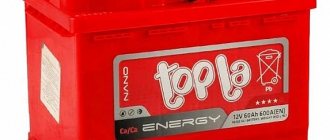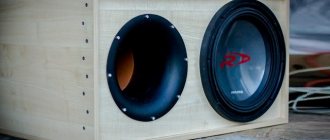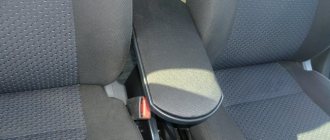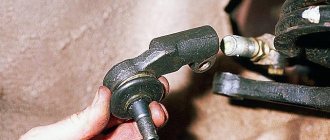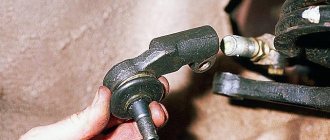Hello dear readers of the kuzov.info blog!
This review article will tell you about the types of car waxes, their application, advantages and disadvantages.
There are hundreds of wax-based products available today. They can be divided into the following categories:
- Liquid waxes
- Waxes in paste form
- Wax sprays
- Sealants for body protection (sealants)
For some car enthusiasts, waxing a car is a huge pleasure. Thus, they seem to achieve perfection in the appearance of the car. They are ready to polish the body every day. Such people are willing to spend a lot of time waxing, using products that are applied in several stages.
For other people who value their time very much, but at the same time want their car to be well-maintained, they need a simple and quick solution to restore the shine and protect the body. For both categories of people, there are products that can give excellent results. Let's look at the preparation and waxing process.
You need to start by cleaning the surface
Before applying any protective waxes, the car body must be washed. Simply washing the body will not be enough; ingrained dirt and stuck solid particles remain on the surface. For more thorough cleaning after washing, universal cleaning waxes, cleaning clays and other compounds are used. Let's take a closer look at the advantages and disadvantages of these cleaning methods.
The reason Turtle Wax 2in1 waxes have been so popular is because they are both a cleaner and a waxing product. Many people now use a synthetic cleaning clay first and then apply wax to the clean paint.
Wax composition 2in1 (cleaner and protection wax) vs cleaning clay + wax
Most modern cars have a clear coat, even if the paint is not metallic. This coating differs from coatings without varnish. Modern varnish coatings are applied in a thin layer. This is done in order to save money and reduce the final cost of the car. Thus, it is not correct to regularly use abrasive products to clean and polish the body. 2in1 wax compounds are both wax-based cleaners and polishing compounds. As cleaners they contain abrasive particles. The reserve thickness of the varnish will not allow you to do a lot of abrasive polishing. It is advisable to use cleansing clay and then use wax that does not contain cleaners. You can read more about using cleansing clay here.
Polish to remove imperfections...before waxing
If the car you are going to wax has minor scratches and abrasions, then you first need to apply abrasive polishing. Some people mistakenly believe that applying wax will remove minor defects. Before applying wax, you need to remove small scratches, traces of dried water, and abrasions. All this can be eliminated or smoothed with abrasive polishing. Wax will simply preserve the cleaned and restored surface.
How to do it yourself?
If for some reason you don’t want to use a ready-made composition, you can make it yourself.
To do this you will need:
- double boiler;
- 5 g wax;
- 50 g coconut oil;
- 20 g carnauba flakes.
Melt the wax and carnauba flakes in a double boiler. Once a homogeneous mass has formed, stir and add coconut oil. Then you need to let the finished mixture cool. Cold remedy can be used.
After a few hours the substance will harden. It should be warmed up before next use.
Applying car wax using a spray
Spray wax can be considered the easiest way to apply wax protection. Spray wax now rivals the best liquid and paste waxes. Wax sprays use polymers that provide good protection.
Many polymer spray-on protective coatings can be applied even in open sun. Of course, for best results it is better to use them in the shade. For example, Meguiar's Ultimate Quik Wax (spray wax) can provide the same level of protection as Meguiar's NXT Generation Tech Wax.
To apply spray wax, you must first thoroughly wash your car. Next, you need to prepare a special microfiber towel for polishing. You need to apply the wax and immediately rub it with this towel. Thus, it is better to treat the surface in small segments. After treating the entire panel, you need to turn the towel over and, using the clean side, you need to finally polish the entire surface again. This way you will evenly distribute the applied protective composition.
Types of wax and how to apply it to cars
Today there are many products containing wax. But this does not mean that any of the types will suit you. Usually they can all be divided into categories - solid, liquid, hot and cold waxes.
There are two groups of car owners. Some people like to spend a lot of time polishing with wax, choosing to cover the body with wax in several stages. Others appreciate the car's well-maintained appearance, which is achieved in one step. At the same time, for each category of car owners you can choose a worthy product. Before applying the product, it is necessary to carry out a preparation process.
Of course, you should always start by cleaning the surface on which you will apply wax. But simple cleaning is not always enough, as small particles and dirt may remain. In order to thoroughly remove all this, they use cleansing clay, universal strength and other means.
Next, abrasive polishing will help you. Although some people think that wax will remove all roughness on its own, this is not so. Wax has a minimal effect on the structure, so abrasive polishing is indispensable in such a case.
Hard wax
Hard wax for a car is considered the best remedy. Those who often treat the body with hard wax call this process the most labor-intensive. To understand how to apply this product correctly, it is necessary to take into account that the surface must be dry. If you spend enough time rubbing the paste and do the work carefully, the result will please you for 3 or 4 months even in winter, when your car encounters salt, dirt, water and snow on the roads.
Synthetic wax is the most durable. It can last under unfavorable external conditions for up to 6 months. The synthetic product is also added to car shampoos.
It should be taken into account that processing should not be carried out under sunlight. Avoiding direct sunlight on the surface will allow you to properly treat your car.
Liquid wax
In addition to the new synthetic wax, there is a separate category of liquid waxes for cars, including spray. Of course, there are much fewer questions about how to apply the spray. However, the ease of application for hand polishing is one of the few positive aspects of this machine tool.
So, if you are offered to apply wax in the form of a spray at a car wash, you can safely choose another option, since the duration of the effect after spraying will last for a maximum of three washes. That is, the consumption will be high and soon you will have to go to the car wash again or learn how to use the spray yourself. And although it is quite easy, the spray will quickly wear off.
Liquid wax should also be applied to a clean surface. It’s easy to apply not only sprays, but also just liquid types of wax with your own hands. It lasts differently, but many times longer than sprays. Liquid wax is still inferior to solid wax in terms of duration of action.
To understand how to polish a car with wax, you need to wait until the solvents evaporate during application. To do this, when rubbing any wax, you need to wait until it dries and leaves a matte film. After this you can start polishing. Regarding the method of rubbing, this must be done either with a microfiber cloth or with a special glove made of the same material using any movements - circular, even, and so on.
Hot wax
Hot car wax is distinguished by its consistency, similar to fat. In order to improve your body with its help, you need to know the intricacies of how to use hot wax.
It's too difficult at home. The body must be heated to 90 °C. After application, the product hardens immediately. So it’s worth carrying out the procedure at the car wash. This procedure has a huge advantage - waxing the body lasts up to a year. But there is also a minus - the high cost of polishing with hot wax.
Despite the fact that applying the product yourself using the hot method requires a specialist and equipment, this method is one of the best and helps protect the car’s coating from corrosion due to its inhibitor in the composition.
Cold wax
Cold wax is usually included in the group with liquid components. It can be applied by hand. Usually among cold products there are those that lose their properties after the first wash, that is, they are simply washed off. This is an irrational way to protect a car, but it has also found its niche in body waxing products. It is recommended to cover your car with cold wax every time after a car wash visit. Despite the low cost, constant use of wax will not be so cheap.
Application of liquid wax and paste wax
In the past, paste waxes were the most preferred as they gave good results. Nowadays, many manufacturers offer liquid and paste versions of wax, which have the same composition. What is their difference? It all depends on preference and application method. Many people find that paste waxes are more suitable for hand-polishing, while liquid waxes are more suitable for use with a polisher.
There is no need to overdo it with the amount of wax applied. This applies to both paste and liquid wax. Less is better. You should get a uniform thin wax layer. For modern polymer waxes, a thick layer is not necessary. A thin layer dries faster and is easier to rub.
When applying liquid and paste waxes, follow these instructions::
- Treat the surface in the shade, where there is no direct sunlight.
- Use a special applicator recommended by the manufacturer or available with wax. A foam sponge is usually suitable.
- Treat body panels in segments of 20 - 40 square centimeters. Some products can be applied to the entire car before rubbing.
- You need to check in the instructions for the product you are using whether you need to wait for the wax to dry before rubbing it. Some products require drying before rubbing, and some need to be rubbed in immediately after application.
- Always use a small amount of rubbing wax. Using too much wax will only waste it. If you apply a lot of wax and it doesn't rub well, try switching sides of the microfiber towel and repeat rubbing with the clean side.
After waxing, the surface should be smooth and shiny, without streaks or smudges of wax.
What to do if, after all the work done, you still have streaks and areas where the wax is difficult to rub. There are several techniques for this. The simplest one is to park the car under the sun for 10–15 minutes. The wax will heat up, but you can’t let it get hot, then again you need to go into the shade or garage. Next, using a clean microfiber polishing towel, you can easily buff the wax to a shine.
Types of wax
There are three classifications of car wax.
One of them is based on the properties of the substance. In accordance with it, the following types of wax are distinguished:
- in the form of a spray;
- liquid;
- solid;
- synthetic.
Spray is considered the least attractive option.
This is due to its low stability. This wax is washed off from the car body in a couple of washes. Therefore, this coating will have to be applied very often, although this process is simple. Liquid wax is more stable compared to the type discussed above. The technology for treating a car with it consists of applying the substance to a washed body and rubbing it.
Hard wax differs from the described types in that it is applied to a dry surface. The process of creating such a coating takes a lot of time. At the same time, it is quite stable and lasts 3-4 months.
Synthetic wax is the most stable, and this coating lasts up to six months. Moreover, it is easy to apply, as it is presented in liquid form. This substance is also included in some car shampoos.
Another classification of car wax is based on application technology. It includes the following types:
- cold;
- hot;
- foamy.
Cold wax is a liquid containing large quantities of cationic surfactants and emulsion wax. Application of such coatings is carried out manually. The disadvantage of this material is its low durability. To maintain the effect, repeat the coating process after each wash.
Hot wax is a fat-like substance of artificial or natural origin. Its melting point is about 90ºС. Carnauba wax is considered one of the highest quality waxes. This is explained by the fact that it is completely transparent, has a high melting point and is highly resistant to wear. This material retains its properties for six months to a year. Many substances of this type contain corrosion inhibitors.
The technology for applying hot wax consists of diluting it with hot water and polishing with a sponge or cloth. The disadvantage is the high cost.
Foam wax is similar in properties to hot wax, but the difference lies in the application technology. The creation of the coating in question cannot be done manually, since this process involves the use of special equipment. It is necessary to create a foam emulsion by introducing air into a mixture of wax and water. The use of such complex technology is justified by the high degree of adhesion of the foam emulsion to the working surface and its uniform polishing.
Another classification of waxes is based on origin. According to this criterion, the materials under consideration are divided into the following varieties:
- synthetic;
- mineral;
- animals (bees);
- vegetable (carnauba).
It should be noted that the properties of these types of wax are similar, so this feature is rarely taken into account when choosing.
Transparent sealants (sealants) to protect paint surfaces
In addition to classic waxes, there are transparent sealants (sealants) to protect the painted surface. They consist entirely of synthetic ingredients. Paint sealants provide longer lasting protection than waxes. They are very easy to apply. The disadvantage is the shallow, superficial shine they give. Some waxes with natural ingredients or a combination of natural and synthetic ingredients provide a deeper shine.
Before applying the sealant, you need to wash and dry the car body. Paint protection sealants are hydrophobic, so no water should come into contact with the surface during application.
The main principle of applying such sealants is that you need to apply a thin layer of the composition and leave for 20-30 minutes. Such synthetic sealants are applied immediately to the entire surface. Can be applied in a circular motion, distributing the composition evenly. There is no need to grind the composition, as is done with classic waxes.
Sealants can also be applied to glass, chrome parts and plastic.
How to apply liquid wax to a car?
Over time, a car's paintwork becomes dull and microcracks appear on it, which over time become very noticeable and spoil the appearance of the car. If everything is left as is, then water, dirt, and sun will contribute to the growth of cracks in the varnish. Car enthusiasts often fight microcracks with polish. But this gives a temporary visual effect. To completely remove defects on the body coating and stop the growth of microcracks, scratches, and small chips, you can use liquid car wax. Over time, a car's paintwork becomes dull and microcracks appear on it, which over time become very noticeable and spoil the appearance of the car. If everything is left as is, then water, dirt, and sun will contribute to the growth of cracks in the varnish. Car enthusiasts often fight microcracks with polish. But this gives a temporary visual effect. To completely remove defects on the body coating and stop the growth of microcracks, scratches, and small chips, you can use liquid car wax. Liquid wax for a car: what is it for? Types of liquid wax Technology of applying liquid wax Advantages of using liquid wax
Applying hard wax
Those who value long-term protection can try hard wax.
The method of application is almost the same as the “hot” version. The only thing is that the protection is applied manually and not diluted in water. Those who value long-term protection can try hard wax. The method of application is almost the same as the “hot” version. The only thing is that the protection is applied manually and not diluted in water.
Cost: The most expensive type of wax. A normal polish costs from 800 and above - 1,300-1,600 rubles. market.yandex.ru
Please note that some types of wax are suitable for dark or light cars! According to the pros, you won’t notice any difference if you cover your car with the wrong “shade” of transparent wax. We're just saying this just in case.
Applying hard wax to a car body
Before applying invisible protection, it is necessary to wash the car, which removes not only dirt, but also the old layer of wax. The wax itself can be applied with a special glove, non-lint microfiber or sponge. Whether the wax is applied in a cross-shaped motion, that is, first transverse and then longitudinal, or circular, does not matter.
Wait for the wax to dry for a few minutes until a matte coating appears. There is no point in polishing until the solvents evaporate. A simple visual test shows whether the wax layer has dried: a cloudy, barely noticeable film appears on the surface.
Important: Car wax is generally not harmful to health, but as a precaution, you should wear gloves before handling it. Also open the garage door or wash outdoors (but not in direct sunlight).
Make sure that the compound is not applied to plastic or rubber parts. The same goes for glass, especially the windshield. First of all, it's useless. Secondly, and more importantly, the windshield wiper will not work properly on the wax film until it wears off, making it difficult to see and leaving water droplets on the glass.
What is liquid wax?
One of the most effective ways, at the same time affordable, is to wax your car . This composition prevents subsequent aging and wear of the coating, greatly facilitates the process of subsequent car washes and promotes faster and more efficient drying after washing.
Car body wax, when applied to the coating, creates a protective layer that also has hydrophobic properties. The wax coating, penetrating into the pores of the varnish, prevents the penetration of moisture, dirt and chemically aggressive substances into the coating itself and further to the car body.
It is quite easy to distinguish a treated body from an untreated one. Firstly, the treated body is more shiny and shining. Especially if you are comparing the same body before and after treatment. Secondly, it is smoother. If, for example, you put a rag on an inclined surface of a treated car, it will easily roll off under its own weight. Unprocessed will not have this effect. The wax coating is clearly visible during washing or rain. Drops, gathering into balls, practically do not spread over the surface, and easily roll off an inclined surface. Road dirt penetrates to a lesser extent and mechanically binds to the coating, thereby increasing the interval between car washes. And the washing itself is much faster and more efficient. And the plus to all of the above advantages of wax is that its application is relatively inexpensive.

